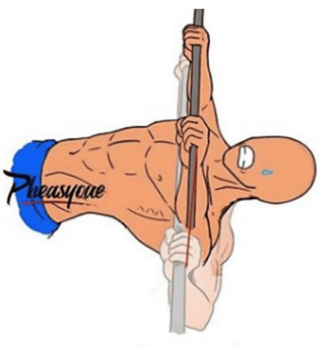I wanted to do a deep analysis of the reason behind the ideal bar path in bench press.
There are many sources telling us that the ideal bar path is something like this (a J pattern on the way up, and a rounded pattern on the way down).
Let's do a gradual analysis and understand the reasons behind that.
Step 1: The proper ending point of the way up
The proper ending point of the way up is above the front delts. As written there, this minimizes the moment arm between the bar and the front delts. Hence, at the top, the front delts won't work so hard to keep the barbell in such a position. Hence, the front delts won't be the limiting muscle of bench press, which is good as we usually want to work primarily our chest.
Step 2: The proper starting point of the way up
The proper starting point, as written always there, is on about the middle chest. It can't be above the front delts as it will make the elbows flare and cause shoulder impingement.
Which is the precise point is debated, as far as I'm concerned. Some sources say it is the nipple, others it is a generic point between the nipple and the Xiphoid Process.
Step 3: The proper bar path The proper bar path should connect the points 1 and 2 previously mentioned in the best way. A first attempt is the shortest path, i.e. a diagonal path:
However, it is not the best one. The best path is said to be that shown in the first picture.
Now, my questions are:
1) The bar above the front delts at the bottom makes flare the elbows and cause shoulder impingement. Why isn't it a problem at the top (where the bar is above the shoulders)?
2) Which may be a possible reason for choosing a curved bar path, which is longer than a diagonal bar path?
3) Which may be an intuitive reason for choosing different bar paths for the way up (concentric) and down (eccentric)?


